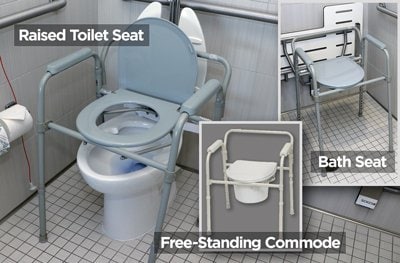Occupational Therapy: The skills of everyday Living
The Role of Occupational Therapy post-op:
If you are staying overnight, We will primarily be seeing you the day AFTER your surgery in the morning to complete education/training on the following:
- Bed Mobility
- Self-cares (ex: Getting dressed, Bathroom activity)
- Functional Transfers
- Functional Standing Balance and tolerance for everyday tasks
- Modified Home set-up to promote safety and independence
Things you can do PRIOR to Surgery / Home Safety Preparation
- Move Obstacles – Pick-up loose throw rugs, extension cords, footstools, space out furniture so you can easily move about with a rolling walker.
- Set-up of daily items at waist – shoulder height to avoid bending, over-reaching. It’s a good idea to carry a cell phone with you at all times during recovery.
- Home Improvement projects – Consider installing handrails or make sure existing handrails are secure; Proper Lighting
- Consider what chairs you have to sit on= avoid soft, low, and rolling chairs. Chairs with firm, straight back and with armrests always help make it safe and easier to get up/down.
- May prepare food ahead of time, stock up on non-perishable items for simple meal prep; purchase paper plates, plastic ware.
- Set-up where someone can help you with garbage management, getting the mail, cleaning, laundry, and cooking.
- If applicable, set-up for someone to assist you with any pet, childcare.
- Look into possible adaptive equipment and medical equipment.
- Arrange for someone to drive you after your surgery. Do NOT drive until cleared by your surgeon.
DRESSING: (Recommend Comfy, easy slip-on/off clothing)
- Dress your operated leg first.
- Undress your non-operated leg first
- If you are having significant difficulty getting dressed prior to your surgery, you most likely will need to use long-handled equipment and a sock-aid post-surgery to independently get dressed.
- If you are getting dressed without any difficulty, you may not need this equipment and just will implement modified techniques.
Choosing Safe Footwear
Durable Medical Equipment
- Your Occupational Therapist will talk to you about your bathroom set-up and ways to adapt your bathroom to meet your needs during recovery.
- An elevated toilet or a 3-in-1 commode may be recommended to promote safety and independence for your toilet transfer.
- The 3-in-1 commode can sometimes fit in your shower, as a shower seat.

Other Considerations
- Majority of our Patients do discharge home with no further Occupational Therapy needs.
- May need assist with getting in/out of bed.
Questions? Please write them down and we will address your needs after your surgery.
TOTAL KNEE Joint Replacement Surgery Education-PDF